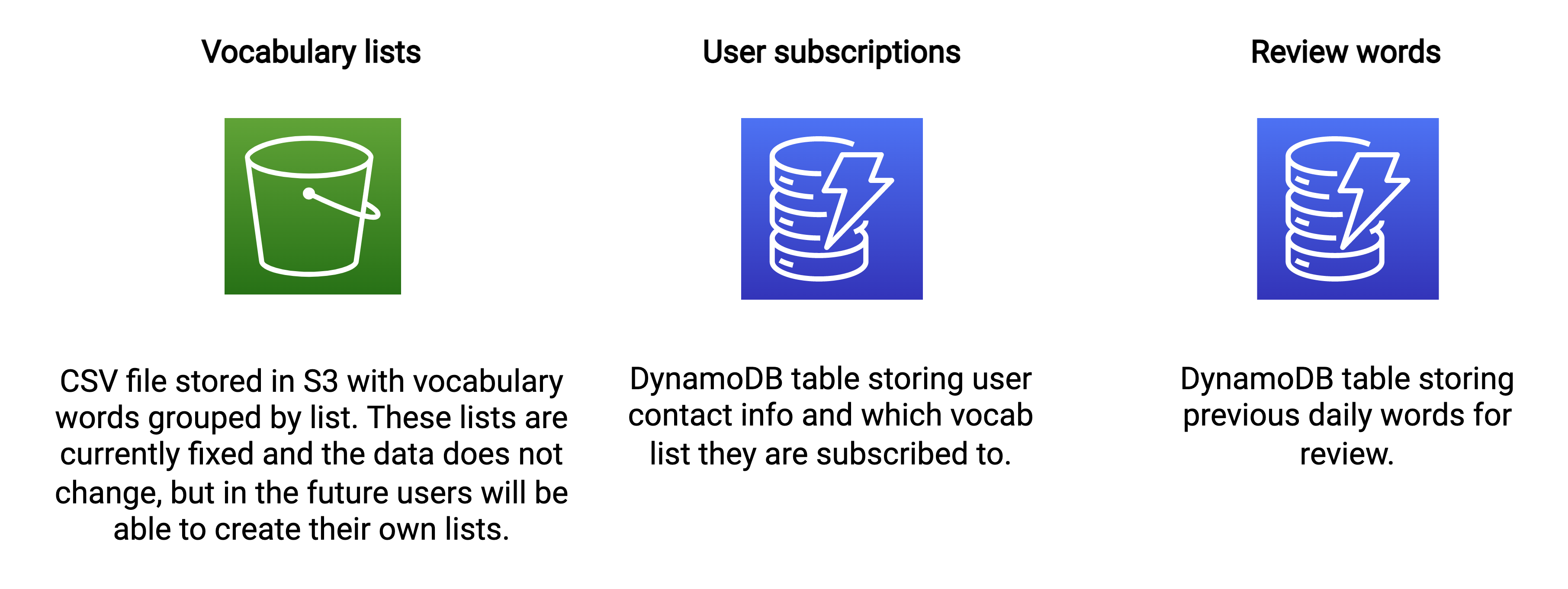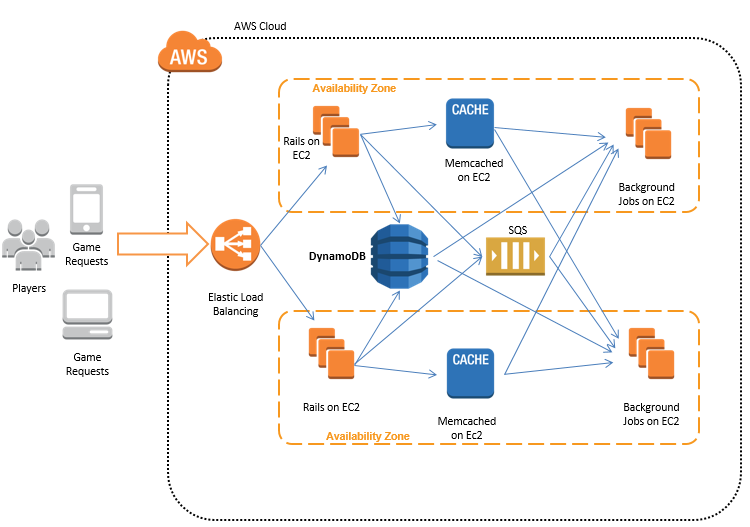What is DynamoDB and How Does it Differ from Relational Databases?
Amazon DynamoDB is a NoSQL database service. It’s part of the Amazon Web Services (AWS) cloud platform. Unlike relational databases like MySQL or PostgreSQL, DynamoDB doesn’t use tables with defined relationships between them. Instead, DynamoDB uses a key-value or document data model. This fundamental difference impacts how data is stored, accessed, and scaled. Relational databases rely on SQL for querying, managing relationships between data, and enforcing data integrity through constraints. DynamoDB, however, uses primary keys for data access and retrieval. The question “is DynamoDB a relational database?” is easily answered: no. Its architecture and functionality are fundamentally different. DynamoDB excels at handling massive amounts of data and high traffic loads through its scalable architecture. Relational databases often require more complex scaling strategies. The choice between them depends heavily on application requirements and data structure needs. Understanding these core distinctions is crucial for choosing the right database for a given project. Is DynamoDB a relational database? The answer remains a definitive no.
DynamoDB’s key-value model is simple and efficient. Each item is identified by a unique primary key. Document models store data in JSON-like formats, allowing for more complex data structures within individual items. These models offer flexibility, enabling developers to adapt easily to changing data requirements. This contrasts sharply with relational databases, where strict schema definitions often necessitate significant restructuring when data models evolve. DynamoDB’s inherent scalability shines in applications needing to handle rapidly changing data volumes and user traffic. Is DynamoDB a relational database? Its flexible schema and key-based access mechanisms demonstrate its non-relational nature. The question “is DynamoDB a relational database” highlights the crucial difference between these database types. The simplicity of DynamoDB’s data model and its focus on key-based access stand in stark contrast to the complexities of relational databases and their SQL-based querying.
The scalability of DynamoDB is a key advantage. It uses a serverless architecture. This means AWS handles the underlying infrastructure. DynamoDB automatically scales to meet demand. Read and write capacity units (RCUs and WCUs) control performance and cost. Relational databases, in contrast, often require manual scaling and careful capacity planning to avoid performance bottlenecks. This automatic scaling in DynamoDB makes it particularly suitable for applications with unpredictable workloads. The question “is DynamoDB a relational database?” is often raised in the context of scalability needs. DynamoDB’s ability to effortlessly handle fluctuating loads is a significant differentiator compared to relational database systems. The answer to the question “is DynamoDB a relational database?” again points to its distinct advantages in scalability and performance compared to traditional relational systems. Understanding these distinctions is paramount when choosing between these database technologies.
Exploring DynamoDB’s Key-Value and Document Data Models
DynamoDB, unlike relational databases, uses a flexible schema. It offers two primary data models: key-value and document. The key-value model is straightforward. Each item consists of a primary key and an associated value. This value can be any JSON-compatible data type. Accessing data is fast because it uses the primary key for direct retrieval. Is DynamoDB a relational database? No, its design prioritizes speed and scalability over complex relationships.
The document model extends the key-value model. Each item, identified by its primary key, stores a complete document. Documents are typically JSON or similar formats, allowing for more complex data structures within a single item. Think of a user profile: the primary key could be the user ID, and the document would contain all user details like name, email, and address. This model’s inherent flexibility simplifies data modeling and is a significant departure from the rigid table schemas of relational databases. The question, “is DynamoDB a relational database?”, is answered definitively: it is not. Its design prioritizes flexibility and speed of access.
DynamoDB’s primary key is crucial. It uniquely identifies each item. A primary key can be a single attribute (a simple key) or a composite key (a partition key and a sort key). The partition key distributes data across multiple partitions, ensuring even data distribution and enhancing scalability. The sort key, if used, allows for efficient sorting and querying within a partition. Using primary keys for data access makes retrieval incredibly fast, unlike relational databases that might require complex join operations to retrieve related data. DynamoDB’s non-relational nature means that it excels in scenarios where rapid data access is paramount. Is DynamoDB a relational database? The answer remains a clear no; its design is fundamentally different.
How to Choose Between DynamoDB and Relational Databases
Choosing between DynamoDB and a relational database depends on several key factors. Is DynamoDB a relational database? No, it’s a NoSQL database. Understanding this fundamental difference is crucial. Relational databases, such as MySQL or PostgreSQL, excel in managing structured data with well-defined relationships between tables. They use SQL for querying, offering powerful features like joins and transactions. DynamoDB, however, is a key-value and document database. It prioritizes scalability and performance for high-traffic applications. Its query mechanism differs significantly; it uses primary keys for data retrieval, not SQL. This makes it unsuitable for complex queries requiring joins across multiple tables. The question “is DynamoDB a relational database?” highlights this core distinction. Consider the nature of your data: If you need complex relationships and ACID transactions, a relational database is likely the better choice. DynamoDB shines when dealing with large volumes of unstructured or semi-structured data where high throughput and low latency are paramount.
Consider the following decision tree: Does your application require complex data relationships and ACID transactions? If yes, choose a relational database. If no, consider the next question: Does your application need extreme scalability and high availability, handling massive read and write operations? If yes, DynamoDB is a strong contender. If no, evaluate the level of query complexity. Simple key-based lookups are ideal for DynamoDB. Complex queries involving joins would favor a relational database. Is DynamoDB a relational database suitable for complex financial transactions? Generally, no. Its lack of robust transaction management makes it less suitable for financial applications requiring stringent consistency guarantees. Conversely, high-traffic applications like gaming leaderboards or e-commerce product catalogs are excellent use cases for DynamoDB. The choice hinges on a careful assessment of your application’s specific requirements. This is why understanding if DynamoDB is a relational database is a fundamental starting point.
A table summarizing the key differences further clarifies the decision-making process. Data Structure: Relational databases use tables with defined relationships; DynamoDB uses key-value pairs and documents. Query Mechanism: Relational databases utilize SQL; DynamoDB uses primary keys. Scalability: Relational databases require careful planning for scaling; DynamoDB scales automatically. Transactions: Relational databases offer ACID properties; DynamoDB provides eventual consistency. Cost: Relational database costs depend on the server’s size and capacity; DynamoDB costs are based on read/write capacity units. The question, “is DynamoDB a relational database?” should be answered definitively: no. Knowing this allows you to correctly evaluate its suitability for your specific needs. By understanding these nuances, developers can make informed decisions, selecting the database technology that best meets the unique demands of their projects.
Understanding DynamoDB’s Scalability and Performance
DynamoDB’s serverless architecture enables automatic scaling to handle fluctuating workloads. This is a significant advantage over relational databases, which often require manual intervention to scale. DynamoDB automatically adjusts resources based on demand, ensuring consistent performance even during traffic spikes. Is DynamoDB a relational database? No, it’s a NoSQL database, and this inherent scalability is a key differentiator. The question, “is DynamoDB a relational database?”, highlights a fundamental difference between these database types.
Performance in DynamoDB is managed using Read Capacity Units (RCUs) and Write Capacity Units (WCUs). These units represent the throughput provisioned for read and write operations. By adjusting RCUs and WCUs, developers can fine-tune performance and control costs. Higher capacity units allow for greater throughput, but also come with higher costs. Efficiently managing RCUs and WCUs is crucial for optimizing DynamoDB performance and cost-effectiveness. This contrasts sharply with relational databases, where scaling often involves complex infrastructure adjustments and potentially significant downtime.
Unlike relational databases, DynamoDB’s scalability is largely seamless. It handles increases in traffic without requiring complex schema changes or lengthy downtime for upgrades. This characteristic makes it ideal for applications experiencing unpredictable growth or high traffic peaks. Is DynamoDB a relational database? The answer is a clear no, and its ability to effortlessly scale makes it the better choice for many modern applications. Understanding the differences between DynamoDB’s scalability and that of relational databases is essential for choosing the right database for a given application. The question, “is DynamoDB a relational database?”, emphasizes the fundamental distinctions in their operational models. DynamoDB’s auto-scaling and capacity unit system provide granular control over performance and cost, features not found in traditional relational database environments.
DynamoDB’s Limitations: When Relational Databases are Necessary
While DynamoDB offers significant advantages in scalability and performance for specific use cases, it’s crucial to understand its limitations. A key constraint is the absence of joins. Unlike relational databases, DynamoDB doesn’t inherently support joining data across multiple tables. This limitation becomes significant when dealing with complex data relationships requiring efficient querying across interconnected entities. For instance, if an application needs to retrieve user information along with their order history from separate tables simultaneously, DynamoDB’s query mechanism would necessitate multiple separate requests and subsequent data merging within the application logic. This can impact performance and increase the complexity of the application code. Therefore, answering the question “is DynamoDB a relational database?” requires recognizing this fundamental difference.
Another area where DynamoDB might fall short is in complex transactional consistency requirements. Relational databases provide robust mechanisms for managing ACID properties (Atomicity, Consistency, Isolation, Durability) across multiple transactions, ensuring data integrity even under concurrent updates. DynamoDB’s transactional capabilities are more limited, making it less suitable for applications demanding stringent transactional consistency across various data entities. Financial applications, for example, often require such strong consistency guarantees to prevent errors and maintain data accuracy. Complex financial transactions involving multiple accounts and simultaneous updates are better handled by relational databases. This is a critical factor to consider when deciding whether DynamoDB is the right fit for your project, as is dynamodb a relational database? Choosing between the two depends heavily on the application’s specific needs.
Finally, DynamoDB’s query capabilities are less sophisticated than those offered by relational databases. While DynamoDB allows for efficient key-based retrieval, performing complex filtering or aggregations across large datasets can prove challenging. Relational databases provide a powerful SQL query language to support elaborate queries and aggregations. Applications requiring such advanced querying functionalities would find relational databases a more natural and efficient fit. Is DynamoDB a relational database? The answer is unequivocally no, given these limitations. Understanding these constraints is vital to make informed decisions when selecting a database for a project, avoiding potential performance bottlenecks and development complexities down the line.
Data Modeling Strategies for DynamoDB: Best Practices
Effective data modeling is crucial for DynamoDB’s performance and scalability. Understanding the nuances of key design is paramount. A well-structured primary key significantly impacts query speed and efficiency. The primary key, comprising a partition key and optionally a sort key, dictates how data is physically stored and retrieved. Choosing appropriate keys requires careful consideration of access patterns. For instance, if frequently querying by a specific attribute, make that attribute the partition key. Is DynamoDB a relational database? No, its non-relational nature necessitates this focused approach. Consider using composite keys when multiple attributes define data access patterns.
Partitioning strategies directly influence scalability. Evenly distributing data across partitions prevents hotspots and ensures balanced performance under heavy loads. Using a hash function on the partition key enables data distribution across multiple partitions. This avoids concentrating read and write operations on a single partition. Furthermore, understanding the trade-offs between single-partition and multi-partition designs is key. Single-partition tables offer simplicity but limit scalability. Multi-partition tables require more planning but enable better performance at scale. Is DynamoDB a relational database? The answer informs your choice, as relational databases handle partitioning differently.
Handling relationships in DynamoDB requires a departure from traditional relational database approaches. Joins are not directly supported. Instead, DynamoDB leverages global secondary indexes (GSIs) and local secondary indexes (LSIs) to manage relationships. GSIs allow querying data based on non-key attributes. They provide flexibility, but at the cost of increased write operations. LSIs, on the other hand, use the same partition key as the primary table but allow queries based on a different sort key. They offer better performance than GSIs, but have limited flexibility. Choosing between GSIs and LSIs is a crucial design decision. The choice depends on query patterns and performance requirements. Understanding these techniques is essential for building efficient and scalable DynamoDB applications. Is DynamoDB a relational database? The answer highlights the need for these alternative relationship management techniques.
Comparing DynamoDB with Other NoSQL Databases (MongoDB, Cassandra)
DynamoDB, MongoDB, and Cassandra are all popular NoSQL databases, but they cater to different needs. Understanding their distinctions is crucial when deciding which best fits a specific application. A key question many developers ask is, “is DynamoDB a relational database?”. The answer is no; it’s a NoSQL database emphasizing key-value and document storage. This contrasts sharply with MongoDB’s flexible document model, which allows for schema-less data organization and more complex queries. Cassandra, on the other hand, is a wide-column store, ideal for highly distributed, massively scalable applications requiring high availability. Its data model differs significantly from DynamoDB’s key-value focus. The question, “is DynamoDB a relational database?”, highlights a fundamental difference: DynamoDB prioritizes speed and scalability over complex relationships.
DynamoDB’s strength lies in its exceptional performance for high-throughput applications. Its simple data model and optimized query mechanisms make it ideal for handling massive read and write operations. MongoDB, with its JSON-like document model, offers greater flexibility in data structuring but might not match DynamoDB’s raw speed at scale. Cassandra’s distributed nature ensures high availability and fault tolerance, making it suitable for mission-critical applications where data consistency and uptime are paramount. Choosing between these databases hinges on several factors. Is a highly structured, relational-style schema required? If not, then NoSQL solutions are a strong contender. Does the application prioritize raw speed and simple data structures? Then DynamoDB is worth serious consideration. If the focus is on extreme scalability and fault tolerance, Cassandra emerges as the leading choice. The question “is DynamoDB a relational database?” is key to understanding its niche, which is not suited to every requirement.
While the question, “is DynamoDB a relational database?”, receives a definitive “no,” understanding the nuances of its data model and capabilities is crucial. DynamoDB excels in specific use cases where high throughput and low latency are critical. Its simplicity and scalability are attractive to many developers. However, the limitations of its data model should be carefully considered. The lack of inherent join capabilities means complex relationships might require more sophisticated design patterns. This contrasts sharply with both MongoDB and Cassandra, which offer greater flexibility for modeling complex relationships. The optimal choice will depend on the specific needs of the application; there is no one-size-fits-all solution within the realm of NoSQL databases. Is DynamoDB a relational database? Again, the answer remains no, but its suitability depends entirely on the project requirements.
Case Studies: Real-World Applications of DynamoDB
Many companies leverage DynamoDB’s scalability and performance. Netflix, for example, uses DynamoDB to manage its massive user data and support its streaming services. The sheer volume of users and concurrent streams necessitates a database solution that can effortlessly scale. DynamoDB’s serverless architecture provides this crucial ability. Is DynamoDB a relational database? No, its key-value and document model excels where relational databases struggle with such scale. The question “is DynamoDB a relational database?” highlights a key distinction. DynamoDB’s focus is on speed and scalability for high-volume applications, not complex relationships.
Another compelling example is the use of DynamoDB in gaming. Imagine a massively multiplayer online game (MMOG) with millions of players. Leaderboards, player profiles, and in-game item inventories demand a database capable of handling incredible write and read volumes with minimal latency. DynamoDB’s ability to handle this scale makes it an ideal choice. The core question, “is DynamoDB a relational database?”, is answered decisively: no, its non-relational nature is a strength in high-volume scenarios such as this. Its flexible data model allows developers to adapt to the dynamic requirements of a game without the constraints of a traditional relational system. This allows for quicker development cycles and faster responses to evolving player needs. The ease of scaling is a key factor differentiating it from traditional relational databases.
Furthermore, many e-commerce platforms rely on DynamoDB. Processing millions of transactions daily demands a database that can handle rapid data updates, high concurrency, and low latency. DynamoDB’s capacity to meet these requirements makes it an attractive option for companies needing to serve millions of customers and process countless transactions concurrently. The question, “is DynamoDB a relational database?”, is irrelevant in this context. The focus here is on speed and reliability, and DynamoDB’s non-relational architecture delivers precisely those aspects. Its adaptability to frequent changes in inventory and pricing information is invaluable. The seamless scaling ensures the platform can handle peak traffic during sales events without performance degradation. Ultimately, understanding whether DynamoDB is a relational database clarifies its ideal use cases.



